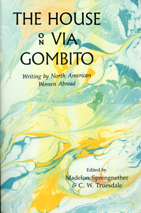When my grandfather, Giovanni Battista Fortunato, entered the United States in 1900, he probably came through Ellis Island in New York. I imagine he spoke enough English to insist that the official inscribe his correct name on the ledger. Also, by then, enough Italians had entered the port of New York that those inscribing officials must have become somewhat familiar with Italian names. My grandfather also had a fair amount of education for an immigrant of that era: years of primary schooling from the priest in his tiny mountain town of Pescopagano (east of Naples in the province of Basilicata); then a year or two in a Naples seminary before disgust with ecclesiastical attitudes toward a united Italy OR an incipient romance (the family stories conflict on this), he left Italy and the priesthood for the land of western promise.
I’m not as versed in stories of Italian immigration as I should be–by the time I was old enough to question “Grandpa,” he’d become wily in the ways of snoopy relatives after “the goods.” It was his youngest son, Frankie, the one of his four boys who spent the most time in Italy, and the biggest rascal, who laid out the two possible interpretations. There are many fine novels and memoirs of the Italian immigration– the several I’ve read most closely are Mont Allegro by Jerry Mangione (1943) , Gay Talese’s Honor Thy Father (1971), and a Minnesota author, Emilio DeGrazia’s memoir, Walking on Air in a Field of Dreams (2009). But, of course, The Godfather by Mario Puzo (1969) captured the American imagination like no other Italian-American work, until perhaps Moonstruck, the film with Cher (1987). When my daughter went to college in Minnesota she stuck up a poster of Moonstruck on her dorm door.
Moonstruck captures all the angst and ambivalence of being an Italian-American daughter and son–Cher’s fiance, Johnny Cammerei, is called back to Sicily on the eve of their marriage because his mother is dying. While he’s gone, Cher encounters Johnny’s younger brother Ronny, who lost his hand in a baking accident. This tortured soul couldn’t more accurately portray the difficulties many Italian-American sons and daughters have in making the transition from devotion to family and heritage into independent American adulthood. Cher accomplishes this miracle of transmutation by cooking Ronny a steak and getting him into bed. Lucky timing because in Sicily, the dying Mama doesn’t die, and her fiance (soon to be “ex”) can’t break the tie to the old country.
Some Italian-American daughters love to straddle the ocean, to return every year and revive “la lingua,” the sense of being immediately transported back to a primary ambience, where the very air and foliage, the gestures and tastes correspond to an interior sense of belonging. Usually my spot of reckoning is Florence, not Southern Italy where my father’s family originated. The grace and restraint of Quattrocentro art, the medieval narrowness of the streets and imposing grey facades of the palazzi which then open into fantastic gardens with views of the Duomo against the sky–all this, along with the beautifully articulated (and understandable) Italian spoken by so many Florentines, make Florence my deep home.
Yes, it’s hard being simply a tourist there–rewarding but hard. Over the years, I’ve edged into a special zone, where I will always remain something of a stranger, but am now recognized by friends and hosts. Where I can count on communicating in this language I love to resurrect, and where there’s always a surprise. This year an organ concert inside the Duomo which began at 9 p.m. The Florentine cognoscenti and me sitting beside Grazia, un’amica of at least a decade, and hearing organ pipes resound from in front, beside and behind. Our trip into the Apennines with her countryman, Antonio, a sarto or tailor, to look for mushrooms, is another story.


Leave a Reply